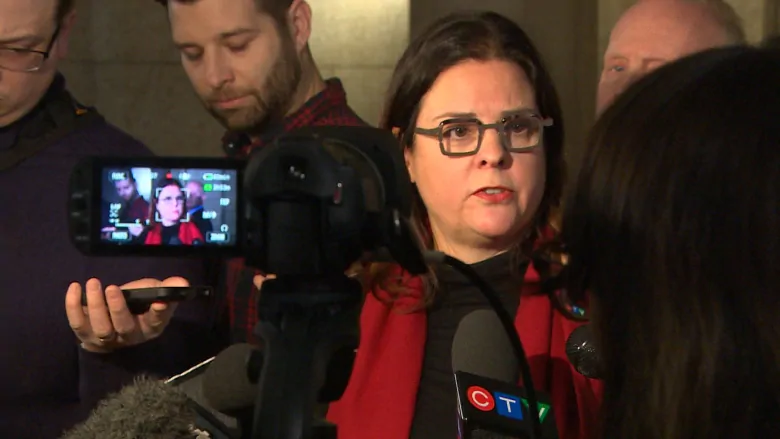Manitoba to end birth alerts system that sometimes leads to babies being taken

The province will end its controversial birth alerts program by April 1, Manitoba Families Minister Heather Stefanson announced Friday.
Birth alerts are warnings from social services agencies to hospitals, intended to flag the history of a mother who is considered “high risk.” The alerts may lead to a baby being apprehended by Child and Family Services in the hospital.
“Moms are hesitant to seek out the help they need because they’re afraid their kids are going to be apprehended when they give birth in a hospital,” Stefanson said Friday.
“What we want to do is end those birth alerts to ensure moms are seeking the help they need in the community, so there’s more of a chance for keeping those families together in the end.”
The province says its decision to end birth alerts comes after recommendations from the child welfare legislative review committee, as well as Indigenous leadership, including the Southern Chiefs Organization, Manitoba Keewatinowi Okimakanak and the Assembly of Manitoba Chiefs.
MKO Grand Chief Garrison Settee said it’s a significant step forward.
“We were very, very excited to hear the news,” he said. “We applaud the province for listening to us.”
Southern Chiefs Organization Grand Chief Jerry Daniels said in a news release that he welcomes the announcement but wonders why the change is not immediate.
“Our children are most resilient when they are surrounded by family and community, not by strangers in emergency shelters and foster care,” he said.
Stefanson said the process of doing away with the program will take a few months.
“This has been around for decades and it takes time to put the CFS system to work with the health-care system to make sure we put all the mechanisms in place to make sure kids don’t fall through the cracks in the meantime,” she said.
In Manitoba, a birth alert goes out for any parent who has gone through the Child and Family Services system or who already has a child in care.
Manitoba has the highest per capita rate of children in care in Canada, with an average of approximately one newborn being apprehended every day.
The alerts aren’t doing what the system intended, Stefanson said.
“They were originally put in place to increase the safety of children. We found no evidence that was taking place,” she said.
Harming Indigenous families: advocate
Michael Redhead Champagne, a member of the Manitoba child welfare legislative review committee, said the system negatively impacts Indigenous families.
“There are many young people I am connected to who say they’re afraid to even have children because they’ve been in child welfare,” he said.
“They’re afraid that if they have kids, it doesn’t matter how great of a parent they are, if they’re Indigenous and they’ve been in child welfare, CFS is going to be triggered by a birth alert and they are going to have to fight to keep their own child.”

The committee released a report in September 2018 calling for an end to birth alerts and for the program to be replaced by “community-based and culturally safe services to identify and assist at-risk parents during and after pregnancies.”
“People already don’t trust the child welfare system and for good reason. Birth alerts make people have that same sentiment and mistrust towards the health-care system as they do toward the child welfare system,” Champagne said.
“It reduces the likelihood that a parent is even going to ask for help, should they need it.”
Stefanson said the province will direct mothers to other agencies but didn’t divulge details.
“We’re here to help you. Please come forward. There’s many organizations — community grassroots organizations — that are there to help,” she said.
Although the goal of ending the birth alert program is to keep families together and improve the safety of children, sometimes children will still be removed from a home, Stefanson said.
“We will always put the safety of kids first. If a child is not in a safe situation, those apprehensions will take place.”





